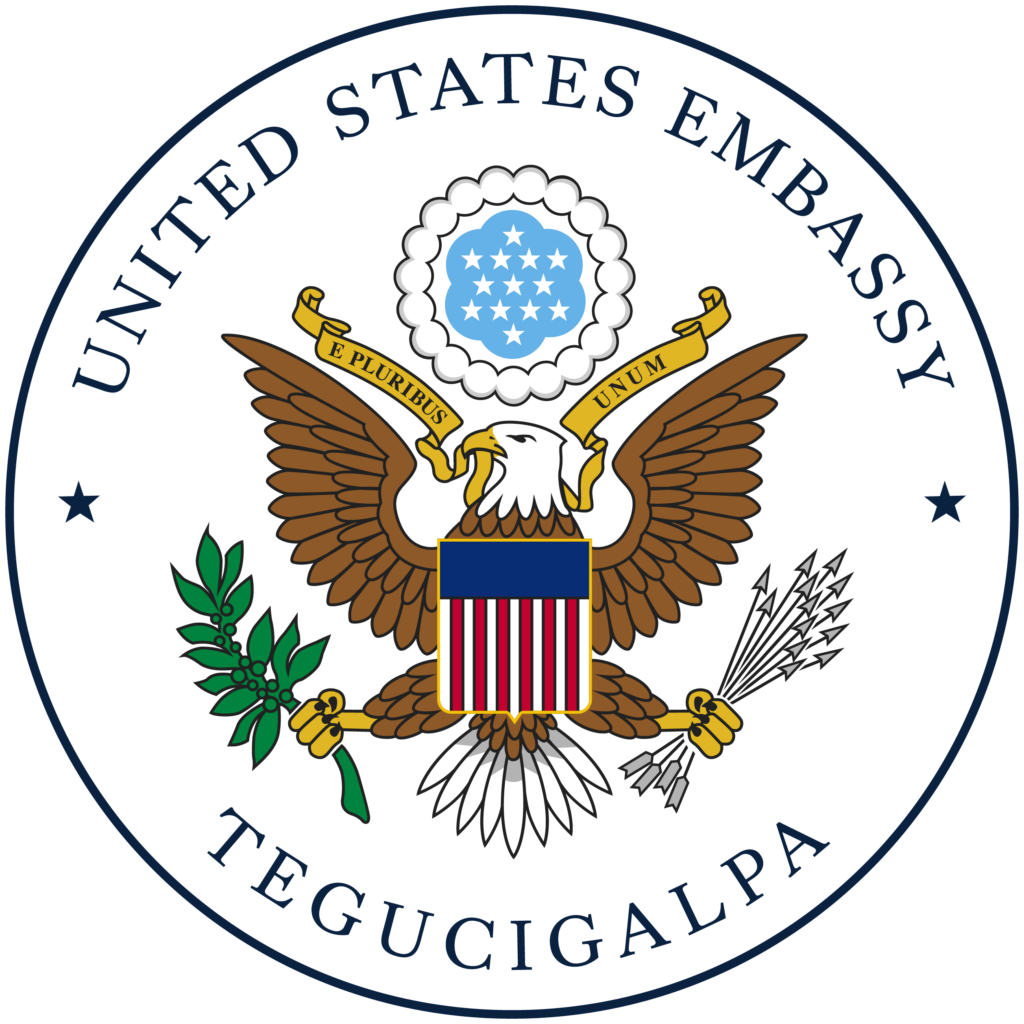
The new U.S. Embassy Tegucigalpa is an effective facility that will be a secure, efficient, and welcoming environment for visitors and mission staff.
The embassy is a physical commitment to the U.S.- Honduran diplomatic partnership.
Project Overview
SHoP Architects
Design Architect
BL Harbert International
General Contractor
Jorge Caballero Arquitectos
Local Architect
9 acres
Site Size
$429 million
Project Budget
36,165 SQM
Gross Floor Area
2015
Design Construction Award
2018
Site Acquisition and Construction Contract Award
2019
Construction Start
2025
Ribbon-Cutting and Move-In
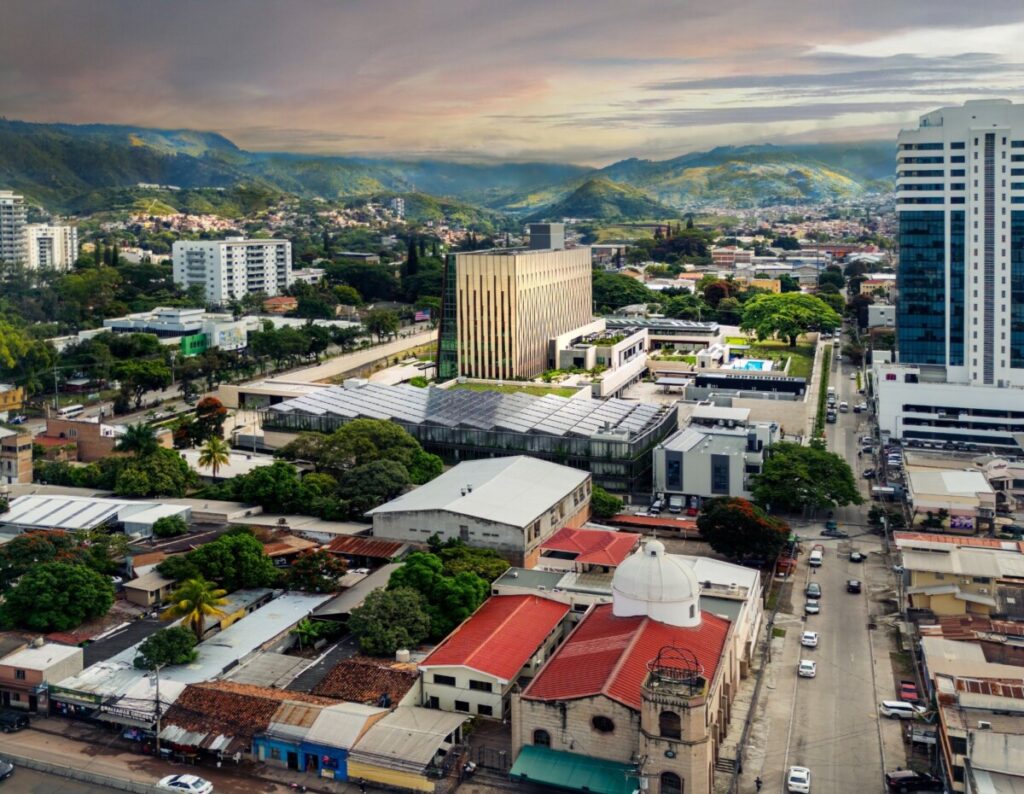
Historical Context
The U.S. diplomatic presence in Honduras has evolved from modest beginnings to a robust partnership.
Following Honduras’ independence from Spain in 1821 and its subsequent separation from the Central American Federation in 1838, the United States recognized
Honduras as an independent nation on April 19, 1853.
In recent years, the U.S. and Honduras have collaborated on economic development and security. The U.S. Embassy Tegucigalpa project builds on a history of shared goals and milestones and will foster deeper diplomatic engagement between our nations.
Location and Environment
The capital city of Tegucigalpa is located in the high central valley of Honduras, surrounded by a striking ring of steep, forested mountains.
Though often partially veiled by low hanging clouds, the nearly complete circle of high, jagged mountains surrounding the city is among Tegucigalpa’s most distinctive features. The peak of El Carrizal rises 3,000 feet above the city.
The capital region including Tegucigalpa is the nation’s largest and most populous area and serves as the center of Honduran political life. The new embassy is located approximately one kilometer from the existing embassy along Avenida Los Próceres in Tegucigalpa’s commercial and administrative district. The neighborhood is bound on one side by the Chiquito River, one of several that combine within the valley to form the Choluteca River at the start of its 200-plus mile journey down to the Pacific.
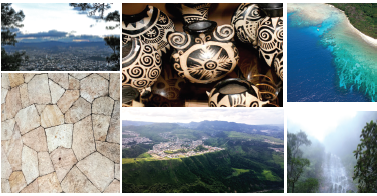
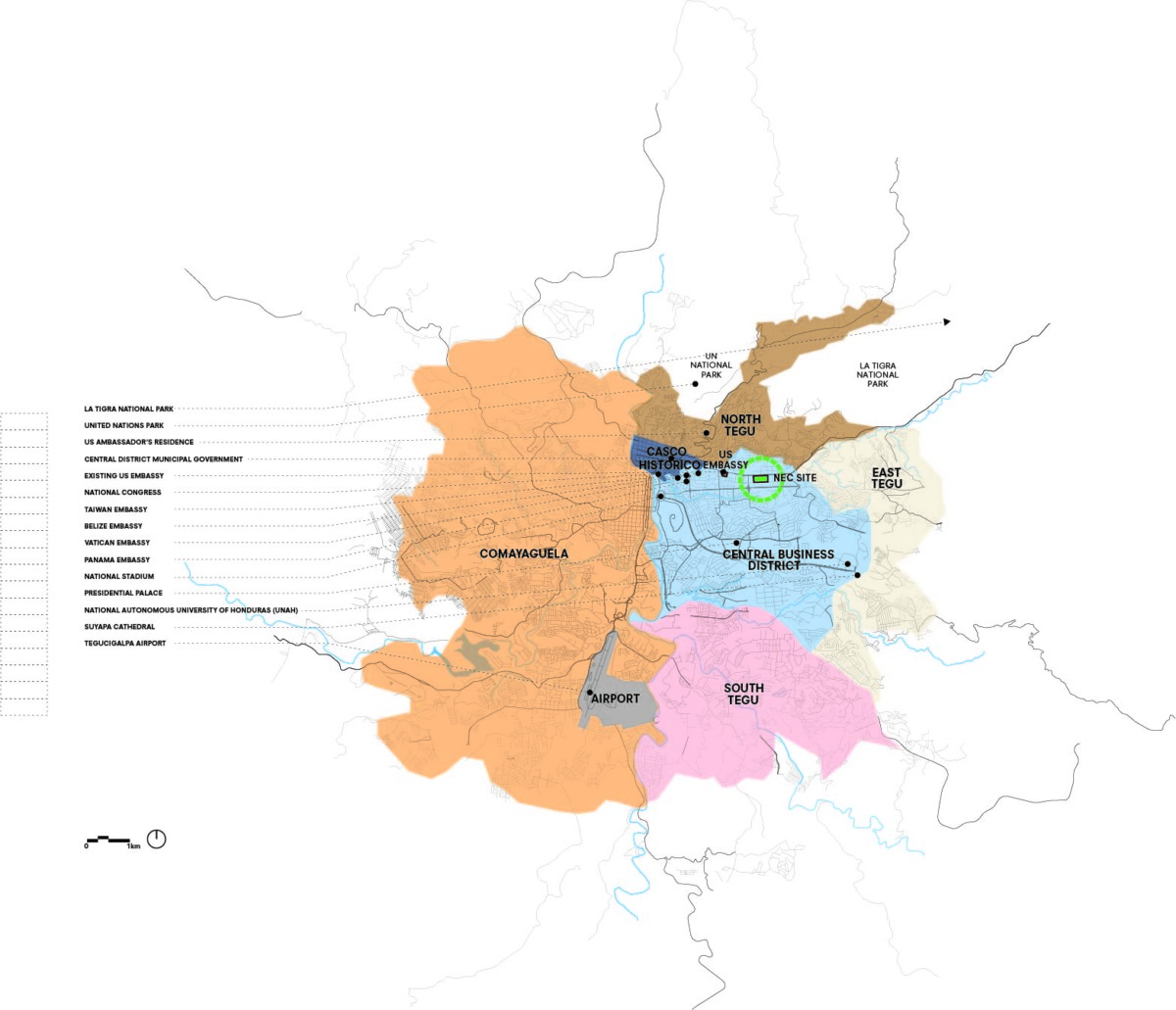
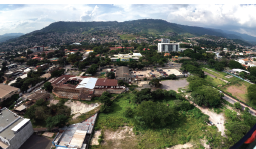

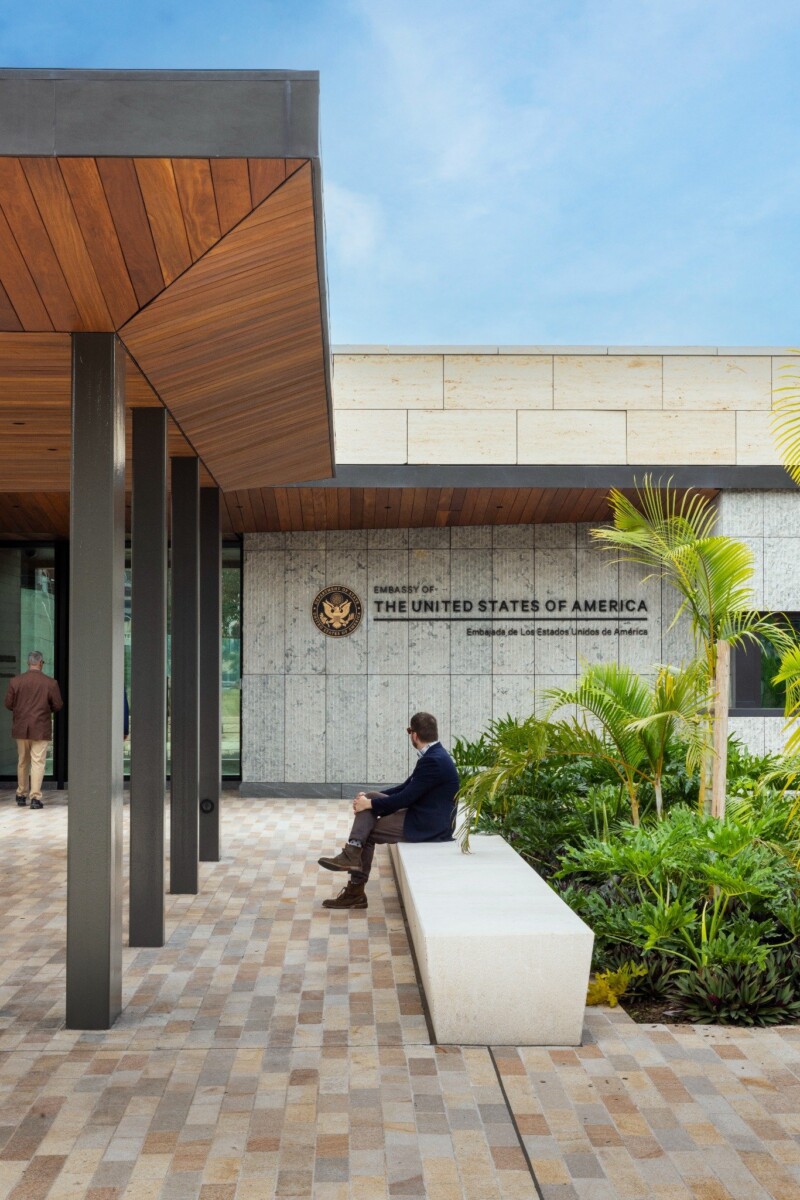
Enabling Diplomacy
Visitor & Community Space
The design of the main public entrance is a balance between formality and warmth, welcoming all who enter while reinforcing the character and mission of the new embassy; to make the United States safer, stronger, and more prosperous.
An outdoor waiting area and consular courtyard with shade structures, benches, and art installations provide a safe and pleasant experience for the high volume of consular visitors to the site.
Inside the consular area, an increased number of consular kiosks is enhanced by Negro Cacao marble and curved slatted wood walls and a ceiling that offer views to the mountains.
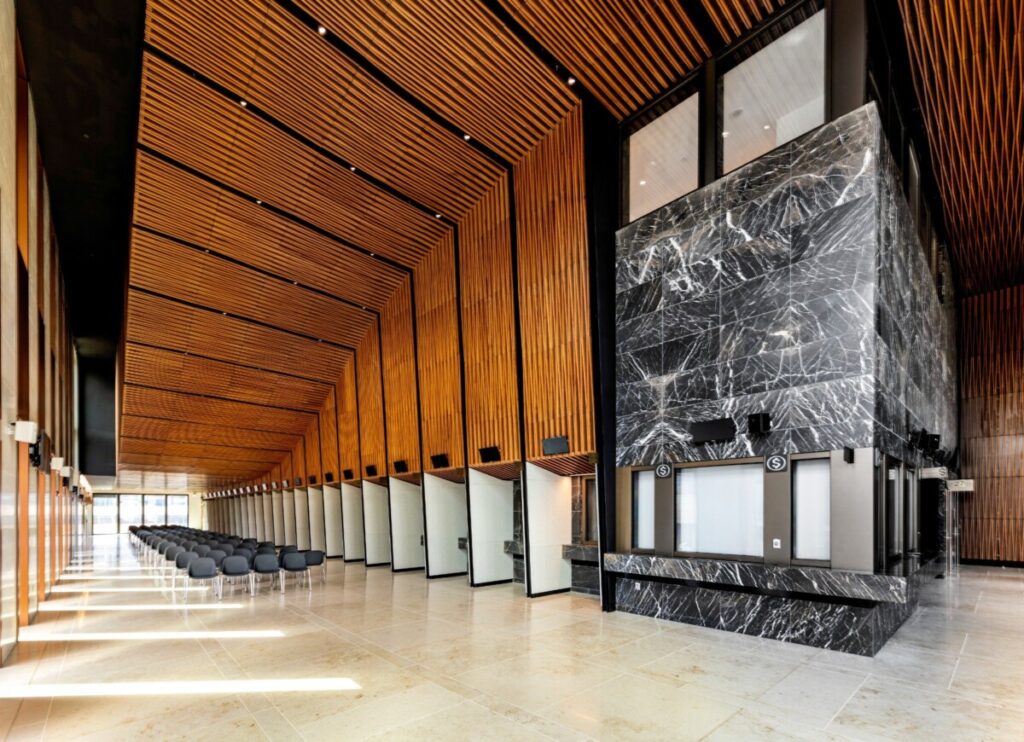
Planning & Design
Vision and Objectives
The architectural design of this major new diplomatic facility, led by SHoP Architects and their local partners at the firm of Jorge Caballero Arquitectos (JCA), embodies the spirit of cooperation between the United States and Honduras. It took initial inspiration from the dramatic terrain of Tegucigalpa and, by featuring local materials and crafts throughout the project, the rich cultural history of Honduras.
Cultural Context
The Chancery’s exterior draws inspiration from traditional Honduran craft pine needle cord basket weaving and triangular motifs of Lenca terracotta pottery. Stone retaining walls and terraced gardens mimic local craft patterns, providing both functional and aesthetic appeal. Art installations co-created and inspired by Honduran culture are integrated throughout.
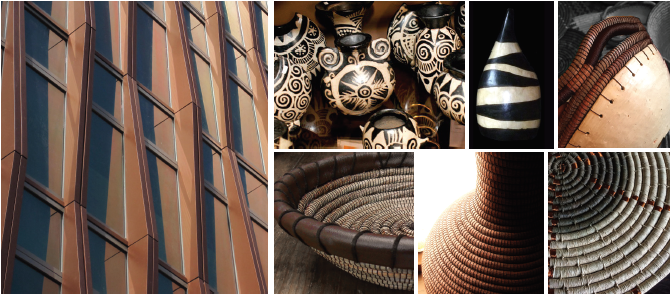
Main Compound Access Control entry
Landscape Integration
The landscape architecture incorporates native Honduran typologies, a blend of woodland, savannah, and tropical forest representative of the robust species across the country from mountains to jungles and beaches. The site plan preserves the natural landscape, including the heritage Guanacaste tree, and maximizes views of the surrounding mountains.
Materials
Earth-tone materials, such as warm woods and stone, are used throughout to create a cohesive and culturally resonant design. Limestone features prominently in the landscape design, forming large, curvilinear stacked stone
retaining and linear seat walls. The paving and site walls incorporate a blend of imported granites, travertine, and limestone.
Interior
The interior design also features limestone and utilizes copper-colored anodized aluminum and richly-toned wood. Splashes of color from integrated finishes and commissioned artworks, especially blues that reflect the sky, rivers, mountains, lakes, and oceans of Honduras add color to the interior.
A standout feature is the use of local Negro Cacao marble, a distinctive Honduran mineral. The design team, contractors, and OBO staff worked closely with Mármoles de Honduras to maximize its impact, arranging the marble into a striking feature wall.
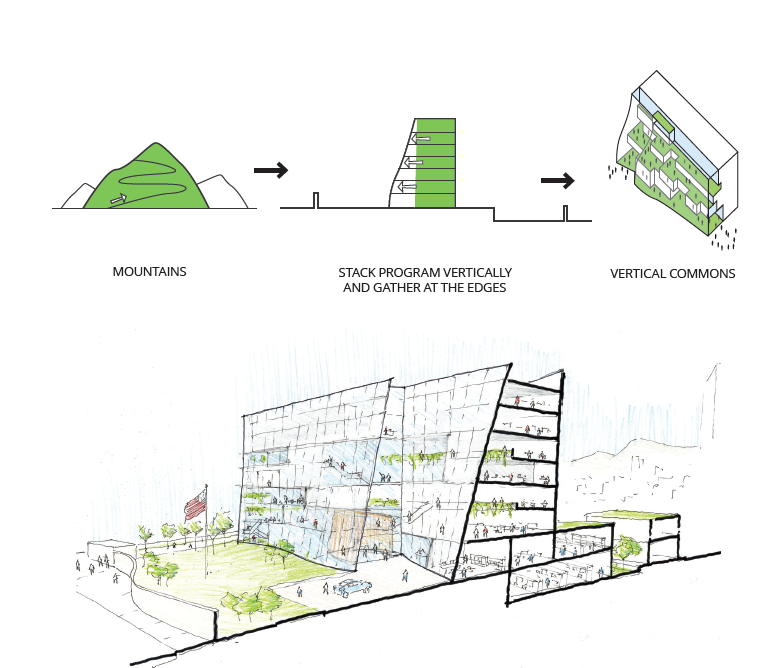
Below Image: Concept Sketch of the Chancery
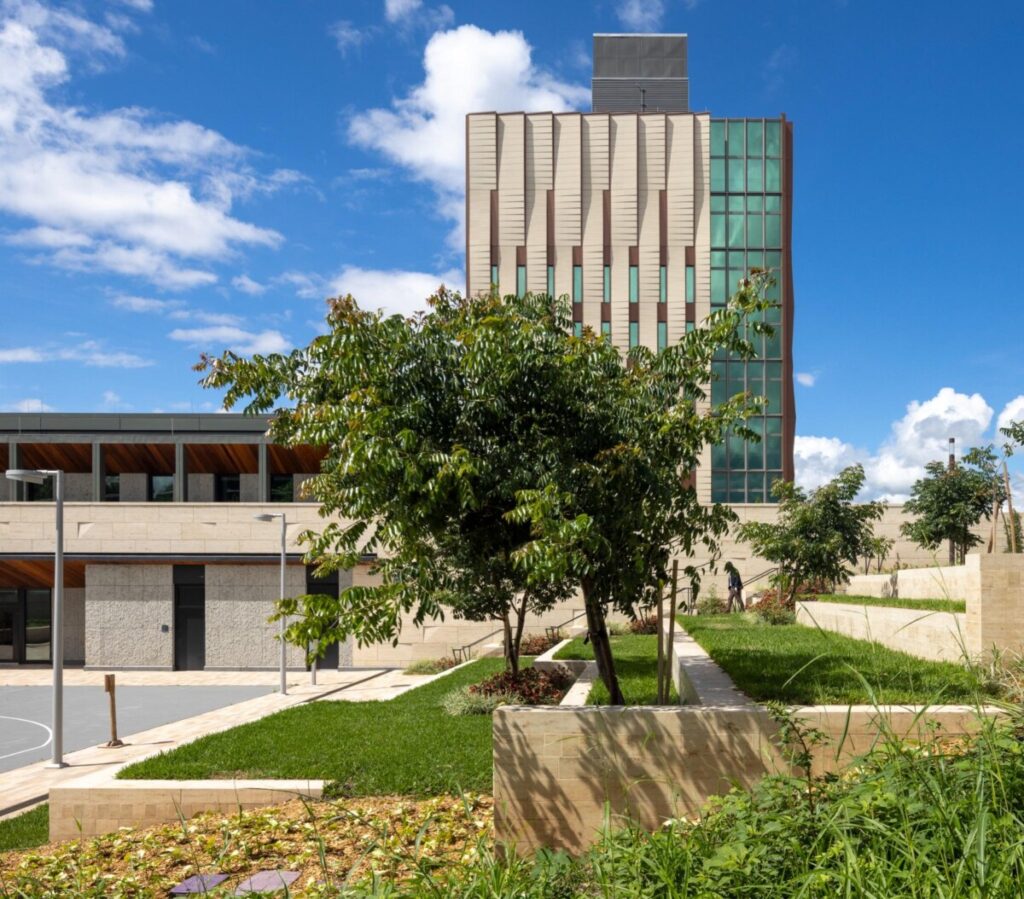

Building Performance Optimization
A model of building performance optimization, the resilient design reduces risk and operating costs associated with utilities and maintenance while enhancing natural hazards adaptation.
Strategic Landscaping
The landscape design celebrates the United States’ unique relationship Honduras. It incorporates native Honduran typologies, including
woodland, savannah, and tropical forest, represented in gardens, courts, plazas, and terraces across the campus. Locally adapted plants, such as the Ocote Pine—the national tree of Honduras—are planted throughout to honor local ecology and minimize water use for irrigation.
Among the local plants, one uniquely stands out: a century-old Guanacaste tree. This tree, a silent witness to Honduran history and culture, has been carefully preserved, honoring its legacy and its crucial role in the surrounding ecosystem. Research teams mapped the structure of its roots to precisely adjust the design of the perimeter wall and excavate debris, ensuring the tree’s protection and preservation for years to come as an act of public diplomacy. Native birds have returned to perch and nest. Standing beneath the canopy of this tree, approximately 22 meters tall, is an awe-inspiring experience.
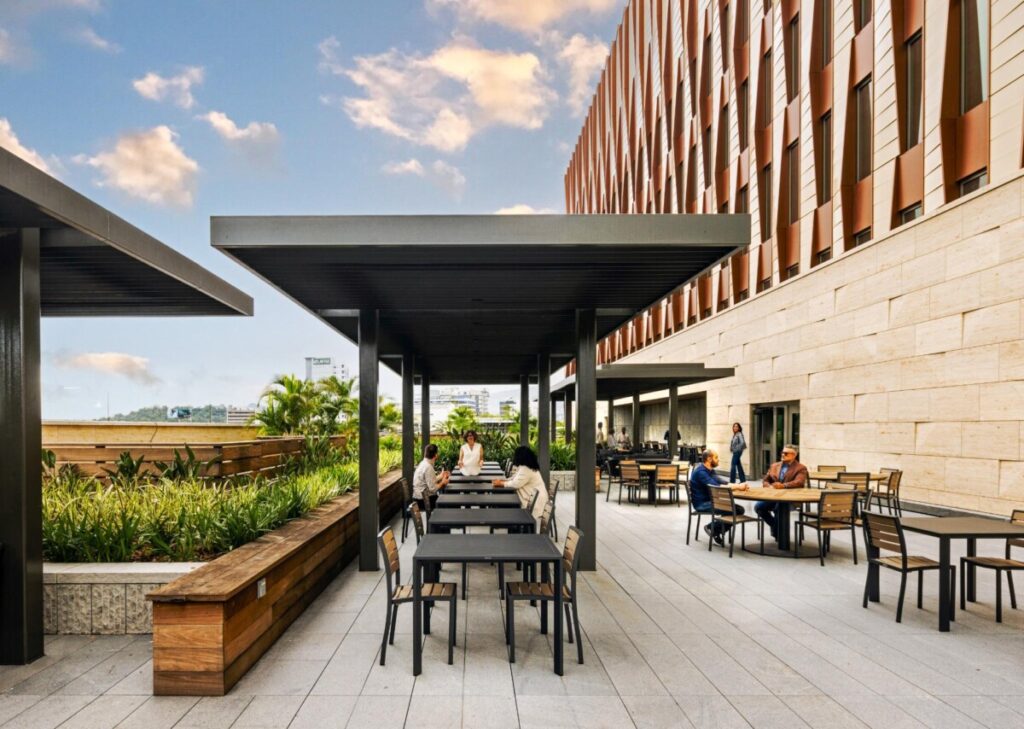

Resource Efficiency
Shade canopies on the top level of the parking garage are fitted with photovoltaic panels, contributing to the utility optimization efforts. The north facade’s prominent vertical fins and horizontal mullions provide shading during periods of direct sunlight, supporting energy efficiency. The east, west, and south facades, clad in a glazed terracotta rainscreen, prioritize performance integrating energy efficiency with security.
Rain gardens at the Main Entrance Plaza, Consular Garden, and Recreation Terrace capture and store stormwater, which, along with rooftop rainwater collection, is recirculated through an efficient drip irrigation system.
Green roofs on the Warehouse, Chancery roof gardens, and Marine Security Guard Residence terraces enhance outdoor spaces and bolster the site’s resilience.
The design of the embassy maximizes energy and water efficiency, which significantly reduces the dependence on Tegucigalpa’s municipal electric and water supply.
Natural Hazards Adaptation Strategies
Incorporating adaptive strategies is particularly important for this project given its exposure to natural hazards such as earthquakes and hurricanes which have strained Central America and the Caribbean coastline. The incorporation of U.S. building code requirements, supplemented with additional criteria based on the specific site’s seismic rating, respond to the regional challenges. The facilities meet stringent seismic demands, detailing specifications, and security standards. Further, a hygrothermal analysis was performed to assess the impact of insulation reduction on moisture management, ensuring envelope design can sustain local conditions. The integration of renewable energy, shading, green roofs, and stormwater harvesting, along with reduced irrigation needs and water reuse, forms an efficient foundation.

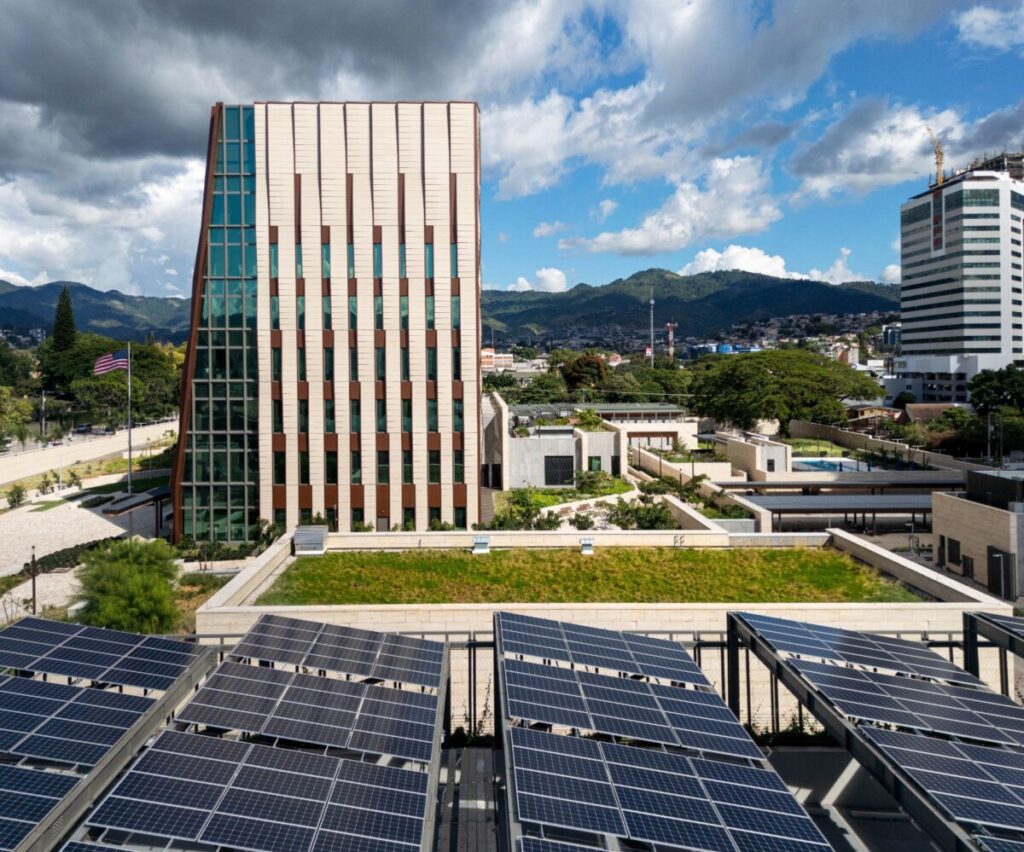
Construction
The new embassy has been a collaborative effort, with OBO, SHoP, JCA, and the construction team BL Harbert International. Challenges were solved through deliberate and intentional partnering between the various stakeholders. The relationship
started long before the work began on site, with BLHI working closely with OBO and SHoP to fabricate the complex curtain wall facade according to the design intent. Mockups built on site and in York, PA at performance testing facilities allowed the team to address issues in fabrication before construction on site, saving both time and money over the span of the project.
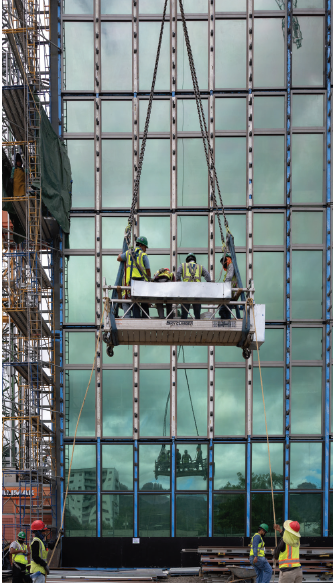

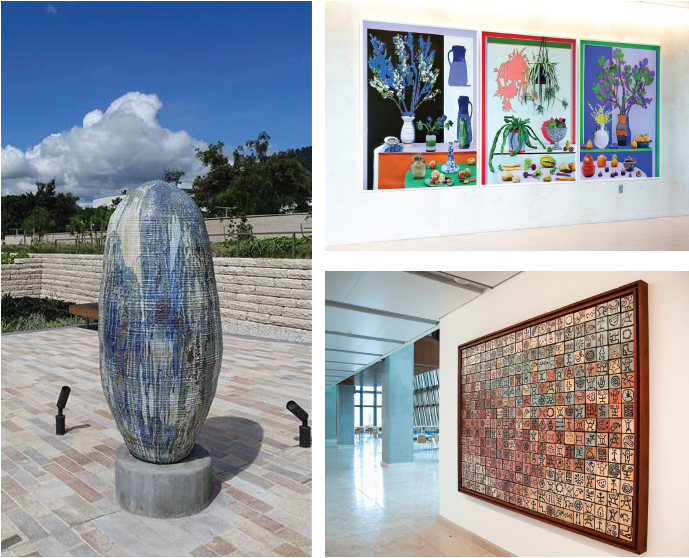
Art & Cultural Heritage
The new U.S. Embassy Tegucigalpa provides an opportunity for works of art both indoors and out from American and Honduran artists of multiple scales and media.
A pair of tapestries by renowned American artist Sarah Crowner adorn the east and west walls of the American Center, reflecting her abstract interpretation of Honduras’ natural world through vibrant color, line, and movement. In the double-height lobby, three stacked works by Honduran artist Adán Vallecillo feature abstract patterns crafted from recycled tires, blending art and sociology. Self-taught American artist Timothy Curtis contributes his graffiti art in office space in the Embassy as a nod to dynamic street art traditions.
A coffee bar for mission staff is highlighted by a suspended ceramic sculpture by Rosen, accompanied by related works on paper. The sculpture reflects the process, hues, and individuality of Honduran pottery making. This location, adjacent to the terrace, is a tribute and reinvention of the cherished coffee cart from the embassy’s former site.
The consular plaza and garden feature a large stone sculpture by Adam Silverman and a trio of stainless steel sculptures by Lisa Williamson, creating a welcoming environment for visitors.
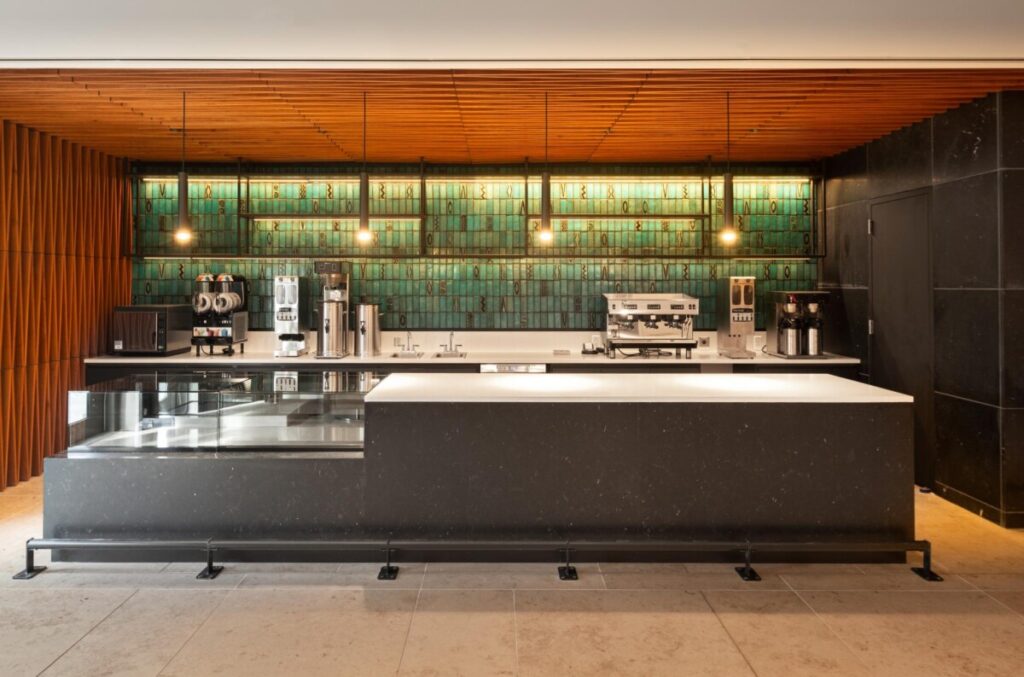
Press
- The Bureau of Overseas Buildings Operations Announces the Construction Award for the New U.S. Embassy in Tegucigalpa, Honduras – United States Department of State
- Remarks Ambassador Laura F. Dogu for Reception for the completion of First Major Phase of Construction of the New Facilities of the U.S. Embassy – U.S. Embassy in Honduras
- Ceremony celebrates progress of new embassy in Honduras – State Magazine
- U.S. Department of State Celebrates New U.S. Embassy Tegucigalpa – United States Department of State
The U.S. Department of State’s mission is to protect and promote U.S. security, prosperity, and democratic values and shape an international environment in which all Americans can thrive. The mission of the Bureau of Overseas Buildings Operations (OBO) is to provide the most effective facilities for United States diplomacy abroad.
OBO is the single real property manager for the planning, acquisition, design, construction, operation, maintenance, and disposal of U.S. governmental diplomatic and consular property overseas.
